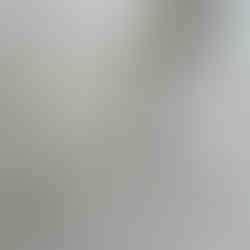Video by Christina Jägersberger
Based on exchanges with researchers from soft matter physics, who focus on understanding and altering physical materialities, stellar dynamics, self-organization of materials, and root development, among others, I propose to look at bodies and architectures of matter—bodies of animals, minerals, and planets—as trajectories of information.
The Big Bang, the formation of elements, and the origin of life—all these phenomena invite us to question: if all matter was made the same, what differentiates a single carbon atom that is part of a non-living system from carbon that exists within living organisms? Could the answer to this question lie in the way information is stored in matter, and the way it configures the form, behavior, ways of relating to the environment, and the trajectories it builds and follows?
In my installation, I explore concepts like the life-like behavior of matter, complex movements, and the influence of natural forces, such as gravity and magnetism, on bodies and materials. My aim is to challenge our perceptions of the boundaries between inanimate and living matter. Hand-made graphite spheres wander across a plane, leaving behind a trajectory as visual proof of informational processes. Driven by Brownian movements—a complex random motion usually displayed by particles suspended in liquids or gases—these spheres start appearing life-like to the human eye.
During my residency at ISTA, I had the opportunity to talk to over 14 researchers in different areas, from asteroseismology to soft matter physics and neurosciences. It was a wonderful experience to engage in deep scientific conversations and share my perspective as an artist. Astonishing connections emerged, not only between the different scientific processes but also between these processes and my artistic practice.
Pictures by ISTA
For this exhibition, I created an installation that builds on my previous interests and processes of scientific research while connecting to the new areas I have been exploring at ISTA. My past work on the origin of life led me to concepts that now support and augment my artistic practice. In this installation, I visualize life-like behavior of matter, complex movements, and the influence of natural forces on bodies and materials. Most importantly, I propose to regard bodies as trajectories and trajectories as visual proof of an information process. This perspective underscores the potential of artistic practices to explore scientific concepts using aesthetic tools such as drawing, rhythms, and repetitions.
A trajectory is the visual proof of informational processes. It is also the form and architecture of the materials that carry information. Thus, the bodies of animals, minerals, and planets are trajectories. Matter originates and then builds every single body in the universe. Unlike being cyclic, it constantly, randomly and chaotically exchanges information.
I found inspiration in the connections between different branches of research, which I perceive as aesthetic. Many researchers explore matter, bodies, and their relationships within the universe, often finding that these bodies, whether material or theoretical, are shaped like spheres. These spheres, across different areas of study, exhibit varied behaviors, relationships, and representations. As a result, I decided to use the form of spheres in my artistic piece. They behave randomly, move, and leave a trajectory behind, much like living matter.
This project, "Trajectories," is an artistic exploration that invites viewers to reflect on the profound interconnectedness of matter and information. It underscores how the forces shaping our universe also shape our understanding and perception of life itself.
























